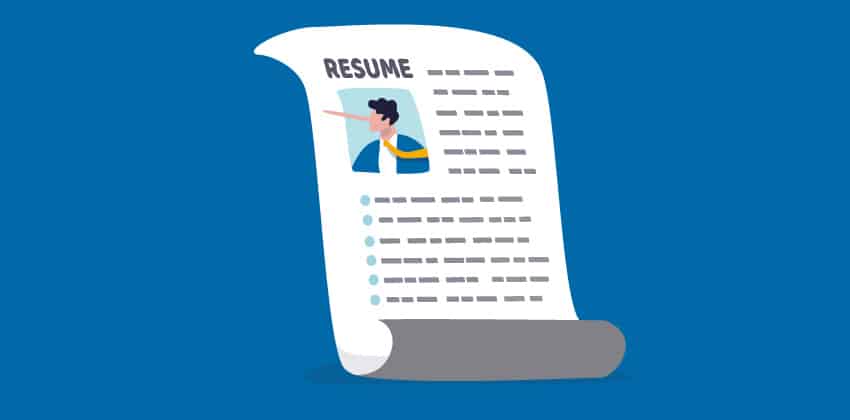
A resume without employment dates considerably underperforms a resume with dates.
This means that if you want to get job interviews you need to use dates in your resume.
Employment dates are some of the facts most frequently checked by employers.
Consequently, the dates you use need to be defensible (and confirmed by your LinkedIn Profile).
Advertisement
Managing Different Periods of Unemployment
The same strategy won’t work for all periods of unemployment.
Below find strategies for different timeframes, from no gap to unemployment that has extended more than two years.
Steady Work History
With a steady work history and no employment gaps, you can be very specific:
Microsoft February 2010 – Present Oracle April 2006 – January 2010
However, even with a steady work history, most people use annual dates in their resumes because it shares the necessary information and saves on word clutter – creating more white space, which in turn makes the resume more visually accessible. Also, if you have recently lost a job, most headhunters and recruiters say you can get away with leaving “- Present” on your resume up to 90 days after your last pay check.
Gaps of a Few Months
Recessions and layoffs have affected almost every one of us, so gaps of a few months between jobs is no longer a cause for shame, it has become acceptable – just one of those facts of life. By using annual dates
Microsoft 2010 – Present Oracle 2006 – 2010
The interviewer will have to ask you to define an employment gap or continuity, and as your goal in a job search is always to get into a conversation, this is not a problem. You explain the gap as time spent getting your resume and job hunt up to speed.
Gaps of Up to One Year
With longer employment gaps of, say, up to 11 months (you left one job in January and didn’t get the next one until December) by consistently using annual employment dates throughout your resume, you can similarly downplay the employment gap on your resume:
IBM 2010 – Present Oracle 2006 – 2010
While being ready to address the dates and details without hesitation in conversation. You explain the gap as time spent getting your resume and job hunt up to speed, painting the house and taking an unscheduled but welcome sabbatical after X years on the job (smile).
Gaps of Up to Two Years
In this example, you left one job at the beginning of the last recession (2008) and got the next job almost two years later at the end of 2010:
IBM 2010 – Present Oracle 2006 – 2009
In using annual dates to minimize employment gaps you are not being dis-honest, you have a right to present yourself in the best possible light, just as every company does.
With Gaps Longer Than Two Years
With gaps longer than two years, if you have done temp work, consulting assignments, odd jobs for a friend in business, this can all be used. Rather than using the term “self-employed,” give your business entity a name.
Mary’s Consulting 2013 – Present Microsoft 2010 – 2012
If you worked for a temp company say so:
TempSlaves Inc. 2013 – Present Microsoft 2010 – 2012
Include assignments described in words most closely relevant to your mainstream professional experience.
Packaging Employment Gaps
I am not suggesting that you should lie about your work history. What we are discussing is a formatting strategy to get you into conversation with a potential employer, remember the daily job search mantra of, “To land a new job I must get into conversation with the people who can hire me as quickly and frequently as possible.”
At job interviews you must be prepared to answer honestly and without hesitation about employment dates and any work gaps they might reveal.
Learn more about handling employment gaps in job interviews.
[MORE: Sample Resume: Handling Employment Gaps.]
More About Beating Unemployment:
- Job-Hunt’s Guide to Beating Unemployment
- Hiring Manager Tips for Escaping Unemployment
- 5 Options to Fill that Unemployment Gap by recruiter Jeff Lipschultz
- Overcoming the Unemployed Bias by recruiter Jeff Lipschultz
- Best LinkedIn Title When You Are Unemployed
- Managing Employment Gaps on Your Resume
- How to Manage Resume Red Flags
- Explaining Your Gap in Employment in Job Interviews
 About the author…
About the author…
Successful careers don’t happen by accident. Professional resume writing expert Martin Yate CPC is a New York Times best-seller and the author of 17 Knock Em Dead career management books. As Dun & Bradstreet says, “He’s about the best in the business.” For FREE resume-building advice and to view Martin’s resume samples, visit the Knock Em Dead website. Join Martin on Twitter at @KnockEmDead.
More about this author…
Don't forget to share this article with friends!




